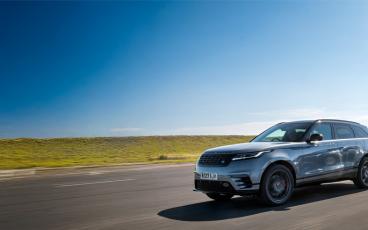Taking the keys to your next car tends to be an expensive business, but it doesn’t need to be. Leasing, or Personal Contract Hire (PCH), could be the answer, because it involves a reasonable initial deposit followed by low monthly payments. Plus, because you give the car back at the end of the deal, there’s no need to worry about depreciation.
Leasing works a bit like car rental and is ideal if you don’t have the finances to buy a car outright, or if you simply aren’t interested in owning the vehicle at the end of the finance agreement and just want to hand it back. Monthly payments on a PCH are often lower than equivalent Personal Contract Purchase (PCP) or Hire Purchase (HP) car finance deals, and there’s no lump sum (also known as a balloon payment) at the end of the agreement.
The Auto Express experts have been scouring the market for the latest and best deals available right now. From family hatchbacks to SUVs and electric cars, we’ve found the best offers for you and your budget. All the deals are from the country’s top providers via our very own Buy a Car service.
What are the top car leasing deals in the UK right now?
Every day our car leasing experts scouring the market for the latest and greatest leasing deals. From family hatchbacks to SUVs and electric cars, we found the best offers for you and your budget and highlight them in our Car Deal of the Day pages.
Top UK car leasing deals on our favourite new cars
Audi A3
KIA Sportage
Nissan Qashqai
Fiat 500
Volkswagen Tiguan
Audi Q3
BMW 1 Series
Ford Capri
Ford Puma
Hyundai Tucson
Mercedes-Benz A Class
Peugeot 208
Peugeot 3008
Porsche Taycan
Land Rover Range Rover Evoque
Tesla Model Y
Toyota Yaris
Vauxhall Corsa
Volkswagen Golf
Volkswagen Polo
Volvo Xc40
Volvo Xc90
Audi Q5
Why buy when you can lease?
With Personal Contract Hire (PCH), you get a great new car with much less of the hassle.
- Low upfront cost and affordable monthly payments
- No ownership worries – just hand it back at the end
- Lower payments than PCP or HP finance options
- No balloon payment to worry about
- No depreciation risk
Best car leasing deals of the week - expert picks from Auto Express
Below are our current top choices for some of the best leasing deals around on the market this week. These are all great leasing prices on cars that our expert road testers are happy to recommend following extensive testing of every new car on the market.
Polestar 4 for just £288 a month
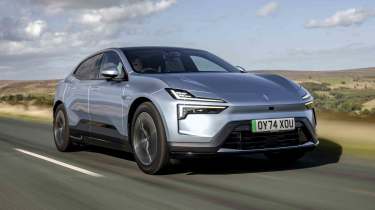
Polestar’s sleek electric coupé-SUV is looking like serious value for money right now. This two-year deal sees you paying just £287.94 a month after an initial outlay of £3,908.28.
Volkswagen Passat for £245 per month
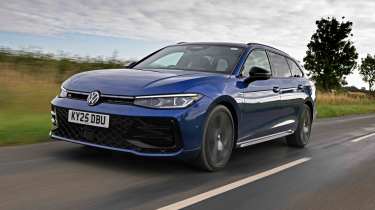
If you’re a fan of no-nonsense capability, the Volkswagen Passat is a great all-rounder with a touch of class as well as loads of space inside. This two-year leasing deal means this upmarket estate car is yours for £244.73 per month with an initial payment of £3,286.73.
Latest Volkswagen Passat deals
Tesla Model 3 for just £293 a month
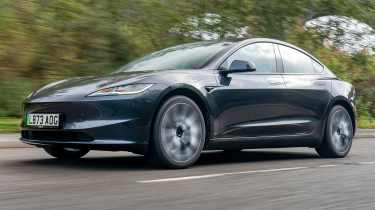
Tesla UK is offering the electric saloon for just £292.91 a month right now. This two-year deal only requires a £3,514.92 initial deposit to get the ball rolling, while mileage is capped at 8,000 a year.
Renault 4 for just £215 a month
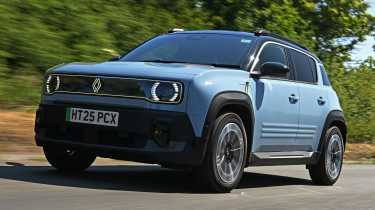
Renault has added to its retro range of cars with the 4 – a small electric SUV based on the excellent Renault 5. It offers a wonderful retro design, more space inside than its sister, and a range of up to 247 miles. This three-year deal comes in at £214.56 a month after an initial payment of £2,922.72.
Vauxhall Grandland for just £192 a month

As the name suggests, the Grandland is the largest and grandest car Vauxhall offers. It's a tech-fest inside and here, in efficient hybrid form, will be cheap to run and especially cheap to lease. This two-year deal sees you paying £192.27 a month after an initial payment of £2,547.25.
Latest Vauxhall Grandland deals
MG4 XPower for £284 per month
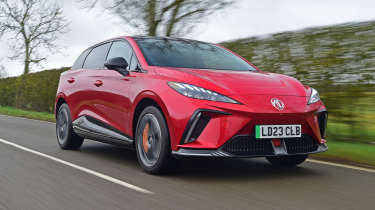
The MG4 XPower offers outstanding power for not much cash. This four-year deal sees you taking the keys to this 429bhp hot hatch for just £283.93 a month after an initial payment of £3,757.17.
Car type leasing deals
If you know what kind of car you need, use the categories below to compare the top leasing prices currently being offered in that sector through our nationwide network. There should be a great car lease to suit everyone...
Small car leasing deals
MG Motor UK MG3
Renault 5
Renault Clio
Skoda Fabia
Toyota Yaris
Fiat 500
Hyundai I10
Volkswagen Polo
Family car leasing deals
Skoda Octavia
Skoda Elroq
Dacia Jogger
Hyundai Tucson
KIA EV3
Skoda Superb
BMW 3 Series
Citroen C4
SUV leasing deals
Hyundai Tucson
KIA Sportage
Skoda Kodiaq
Nissan Qashqai
7-seater leasing deals
Hyundai Santa FE
Peugeot 5008
Nissan X-Trail
Land Rover Defender
Electric car leasing deals
Volvo Ex30
Tesla Model 3
MG Motor UK MG4
Cupra Born
Hyundai Ioniq 5
KIA EV9
Ford Explorer
Volkswagen Id.7
Stay up to date with more lease deals by following our Leasing Car Deal of the Day picks.
Check out our Used Car deals and New Car deals and if you have a car to sell we also offer a Sell My Car service.
Frequently Asked Questions
Leasing a car is simple. You pay an 'initial payment' upfront, choose your annual mileage and contract length, then make fixed monthly payments. At the end, simply hand the car back.
It’s easier than PCP... and usually cheaper too. That’s why more drivers are switching to lease deals and upgrading to a new car as soon as their contract ends. With growing demand, providers are offering even better deals, giving you more choice than ever.
Leasing can include extras like road tax, breakdown cover, maintenance, and tyre replacement, all rolled into one simple payment. Just make sure you check exactly what's included before taking out the lease.
Leasing is otherwise known as Personal Contract Hire (PCH) but companies can also lease cars under Business Contract Hire (BCH) deals that exclude VAT.
